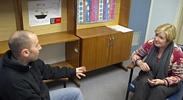At some time in your life there is the likelihood that you will or have given a speech. Throughout your education, it is quite possible that you were required to speak on a particular subject at one time or another. Perhaps you toasted the bride or groom at a wedding or were asked to give a eulogy at a funeral. Maybe you delivered a graduation speech at your high school or university. In any or all of these situations, your oral delivery would have been a speech.
While there are certainly similarities between the speech and presentation, there are also some differences; and, it is important to understand what distinguishes the former from the latter.
Formal in its delivery, the speech consists of a script that you will read, word for word. (The better speakers, however, do not sound like they are reading – they sound like they are talking to you.) The presentation, on the other hand, should never be read. Instead, you should speak around notes or bullet points which are either on note cards or on some form of visual aid; i.e. a PowerPoint presentation or overhead slides.
While both the speech and presentation consist of an opening, a development, and a closing, the presentation will be ‘looser’ in its structure and offers greater opportunity to add or delete material during your delivery. Usually during my presentations, I will change anecdotes or even the format of my design dependent on my audience.
If you are relying on slides or PowerPoint to keep you on track, however, be careful how far you stray from your main points.
In a presentation I gave to some Toastmasters in Detroit last year, one of the women in the audience was quite vocal in her agreement with my words. I stopped midstream and asked her her name. Because of her broad smile and heartfelt laughter with my material, I switched gears and talked about smilers, those in your audience who will smile throughout your speech or presentation (every audience has them).
Since my presentations deal with public speaking skills, I usually discuss this aspect towards the end of my delivery. In this particular case, however, Joanne was so effusive in her response to me that I wanted the audience to become aware of how powerful smilers can be in bolstering your confidence. Had I been giving a speech, however, I would not have felt comfortable changing the layout of my major points or subtopics during my delivery.
Whereas the presentation actually allows for acknowledgement of audience response, the speech does not offer the same flexibility. When President Obama delivers a speech, he will not ‘change it up,’ so to speak. He needs to follow the TV monitor and cannot afford to change his thoughts midstream. In this respect, the delivery of a speech does not allow for the same audience interaction that is very likely and most welcome with the presentation.
Whether it is a speech or a presentation, understand the differences between them and your delivery will be much more effective.



